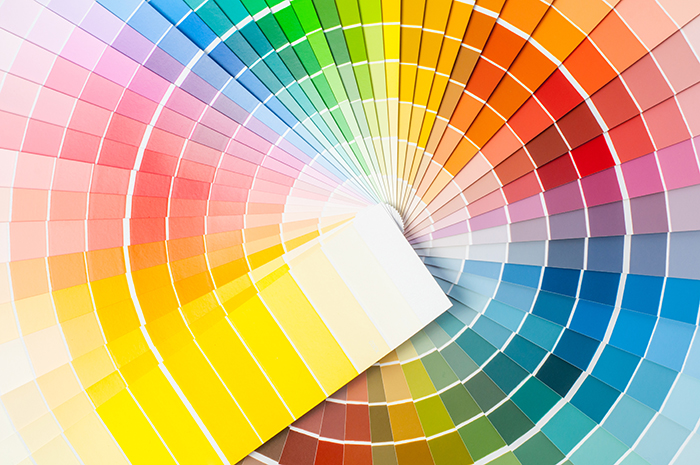More news
- Focus on the global coatings market: Global coatings market outlook
- View from the UK: Navigating chemical policy and sustainability
- Focus on adhesives: Unveiling unbreakable bonds – Testing redefines physical strengt...
- Focus on adhesives: Henkel and Covestro collaborate for sustainability of engineered wood ...
- Advances in construction chemical technology: What’s new in 2024?

Sherri Thompson, BYK-Gardner, USA, discusses how digital colour standards are positively impacting automotive and industrial coatings manufacturers
Fast and accurate colour matching, quality control and overall costs are critical for automotive and industrial coating manufacturers whose products are held to the highest industry standards. In product design and development, the right colour reflects mood and style and captures attention. A standard can speed up design approval and set colour expectations during design. In production, certified reference standards ensure the colour matches throughout the process.
Previously, large OEMs, paint companies, or company chains that needed to provide the same coloured parts for final assembly needed to physically establish master colour plaques, an acceptable range of variance, and offset plaques. This procedure allowed for inconsistencies and variables when many companies tried to establish a colour match of one final product. The costs for this procedure are high, and it takes many man-hours to create the panels, agree on them, distribute them, check them, verify them in the field, certify them, and perform quality control on the parts. Producers want more robust, sustainable and safe analytical methods delivered faster as testing and instrumentation become more complex and regulations become stricter.
Why use digital colour standards?
Instrument software can use digital colour standards to specify and communicate colour, formulate colourants and raw materials, and control colour quality. They ensure brand owners that the colour they communicate is the colour they will produce, which gives manufacturers the confidence to work faster and more efficiently.
Digital color standards – Efficiency and productivity combined with consistent quality
One of the most critical technology developments enabling greater efficiency and productivity combined with consistent quality is the digitalisation of colour standards for remote, automated operations. Digital standards represent colours identified by a name and their spectral measurement data. Spectral data describes a colour’s fingerprint to communicate its unique identity accurately. Transformation to digital colour standards offers tools and capabilities that provide spectral colour values to ensure everyone aims at the same target. This opens the gates to combating production errors, cost overruns and additional man-hours.
READ MORE:
Benefits of digital colour standards
- Offers accurate, consistent colour reproduction on a given substrate, particularly on different parts being assembled as one;
- Provides sites around the world the ability to store, compare, analyse, and retrieve spectral data for the same target from one central location;
- Provides brand owners with confidence in colour specification communication;
- Offers quantifiable goals, the ability to work faster and more efficiently with confidence;
- Used with software to specify and communicate expectations of colourants and quality control;
- Cost and time savings throughout the process.
The true benefit of using digital colour standards comes from a singular point of control and distribution of that master standard so that everyone checks their product to the master. Digital colour standards are one of the most effective tools for matching colors and producing accurate colours faster with less waste.
Fundamentals of colour measurement
To understand the benefits of digital colour standards, one must understand the fundamentals of colour measurement. All colour visual assessments and measurements require an observer, an illuminant and an object. There are two observers available in instrumentation:
- 10-degree Observer – Best correlation to visual and used by the majority of industries
- 2-degree Observer – Used in printing applications
Both observers were developed by using the Wright/Guild Experiment. This experiment had a masking screen with a 2-degree and 10-degree opening. All instrumentation has the option of using either Observer. There are significant differences between the two Observers. Therefore, all participants in a colour programme must be using the same Observer. This is set in the Digital Standard, so there is no confusion about what the Observer should use.
The illuminant has many options in instrumentation, for example, D65 (Daylight), A (Tungsten), and F2 (Fluorescent). Each illuminant has a specific spectral curve, representing the reflected light from the illuminant. The D65 (Daylight) curve has the most uniform curve for all wavelengths, whereas the A (Tungsten) curve has significant reflectance in the red wavelengths. The colour difference can be substantial if two different illuminants are used for the same sample. Therefore, the illuminant is set in the digital standard, so there is no question about what illuminant was used for the measurement. The object can have many different characteristics, including gloss, absorption pigments, diffusing pigments and effect materials.
Conclusion
Digitalisation is driving operational optimisation and excellence. Access to data and technology has changed the paint and coatings industry forever. As digital colour standards, content and communications have rapidly evolved in recent decades, the ability to exchange information has accelerated communication with worldwide partners to instantly provide color-matching data for separate assembled pieces quickly and efficiently. The true benefit of using digital colour standards comes from a singular point of control and distribution of that master standard so that everyone checks their product to the same master.
Digital workflows are rapidly being implemented to increase customer satisfaction and ensure accurate colour matching. Digital solutions also benefit paint retailers and manufacturers by streamlining colour development, improving quality control, cutting costs and increasing sustainability.
For more information, visit: www.byk-instruments.com
 Author bio
Author bio
Sherri Thompson, Marketing Manager, BYK | Paul Gardner Company, has a BA in Commercial art and a minor in Marketing from East Carolina University. She has over 20 years of experience in marketing, management and application of physical test instrumentation in the coatings and inspection equipment industries.







